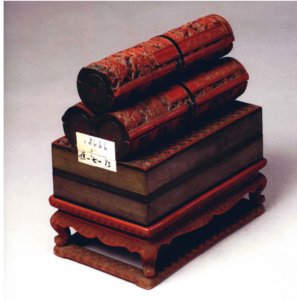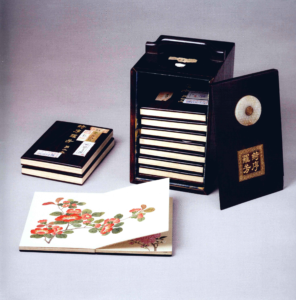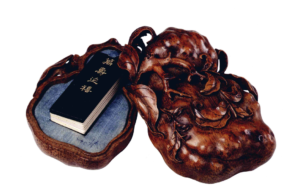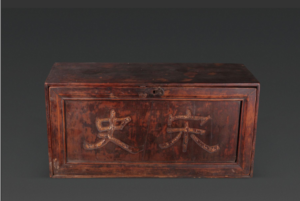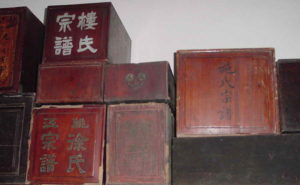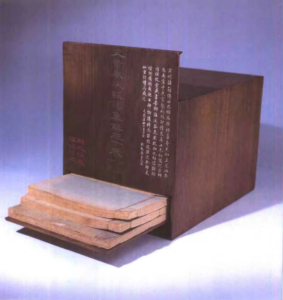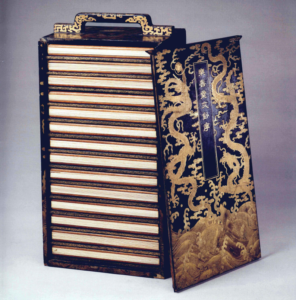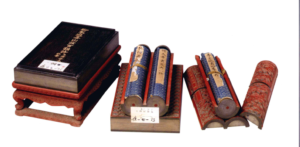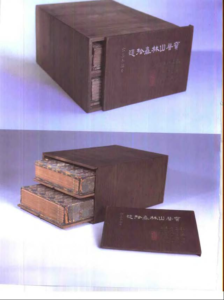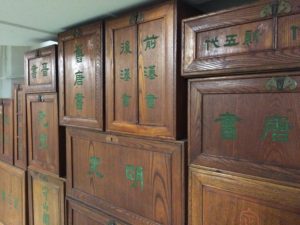Unsurprisingly, when talking about pre-modern East Asian book bindings, covers, slip-cases, and storage, there’s a dizzying amount of material. Regrettably, compared to other areas of research, these external aspects of the Chinese book are understudied. This is probably due in part to the primary goal of Chinese bibliography (版本學), which was to identify and date editions. The edition lived inside of the covers. Everything outside, while clearly important to owners, has mattered less to scholars.
Given that there’s so much to say on this topic, I’ll begin by focusing on boxes, usually called xiang 箱 and he 盒 in Chinese. These differ from tao/hantao 套/函套, which are usually called slip-cases in English. (Most rare Chinese books have some form of slipcase, and since they’re so common, I need to think of better ways for presenting them). Below, is a small gallery of some nice examples of boxes. As time allows, I’ll add more, as well as some thoughts (I have pictures of a number of them somewhere!).
